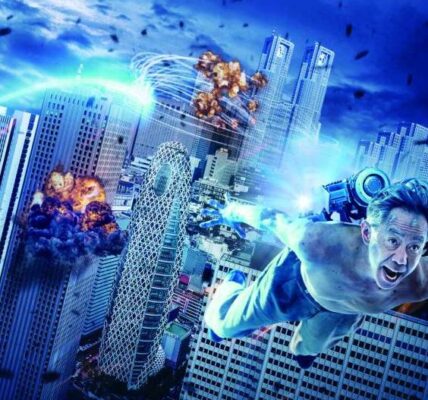1. Plot Summary
Hereafter interweaves three parallel stories of people deeply affected by death and the question of what lies beyond:
- George Lonegan (Matt Damon) is a blue-collar American who possesses the ability to communicate with the dead—but he has long abandoned that life, seeing it as a burden rather than a gift.
- Marie Lelay (Cécile de France), a French television reporter, survives a violent tsunami and experiences a near-death event. When she returns to life, she is haunted by visions and a changed outlook on what lies beyond.
- Marcus, a young London schoolboy (played by twins Frankie and George McLaren), loses his twin brother in a tragic accident. He struggles with grief, longing, and the hope of reconnecting in some way.
These three lives, initially separate, eventually converge. Each character wrestles with death, the possibility of life beyond, and how to move forward with or without answers.
2. Notable Elements
Stands out / strengths:
- The tsunami sequence is a striking opening — it’s visceral, disorienting, and emotionally jarring, setting the tone for the film’s exploration of mortality.
- Tone & restraint: Eastwood directs with understatement; the film is contemplative, often quiet, letting emotional beats breathe. Roger Ebert praised its “tenderness, beauty and a gentle tact.”
- Interleaving stories & slow revelation: The narrative pacing is measured, gradually revealing how the characters connect and how their experiences inform each other.
- Performances: Damon’s depiction of a reluctant medium is conflicted and weary, and the McLaren twins bring genuine vulnerability as Marcus. Marie’s struggle is subtle but central.
- Visuals & mood: Cinematography supports an atmospheric, almost dreamlike mood in places, balancing realism and the spiritual.
Weaknesses / parts that don’t fully land:
- Some critics say the drama can lapse into sentimentality or feel “hokey” when the supernatural elements push too strongly.
- The three-story structure occasionally feels diffuse; at times the connections seem imposed rather than organically arising.
- Certain plot threads or motivations (especially for George’s psychic ability) are left somewhat ambiguous or underexplored — which may frustrate viewers seeking firm answers.
- The film’s pacing is slow; early segments may feel drawn out before the tension builds.
3. Themes and Messages
- Life, death, and what lies beyond: The film probes belief, fear, and solace connected to death, without definitively saying “what is true.”
- Burden of perception: George’s ability to communicate with the dead is both gift and curse; the film explores how seeing beyond death affects one’s relationships and sense of self.
- Grief, loss, and hope: Marcus’s loss of his twin, Marie’s brush with death, and George’s estranged relationships all center on how humans cope with absence and longing.
- Interconnectedness of lives: Though separated by geography, the characters’ paths cross, suggesting that suffering, belief, and healing are universal.
- Faith, skepticism, ambiguity: The film avoids doctrinal certainties and leans into ambiguity — whether experiences of the afterlife are literal or psychological is left open.
In relation to holiday or festive sentiment: Hereafter isn’t a holiday movie, but its themes of memory, loss, longing, and hope resonate with the reflective mood often associated with holidays. The idea of reconciling absence with the need for closure or connection echoes many seasonal narratives about family and remembrance.
4. Personal Impressions
What I appreciated:
- I admire the film’s courage in handling such vast, intangible questions without overselling them. It respects mystery.
- Some scenes stayed with me — flash glimpses of the “other side,” moments where the ordinary world feels fragile.
- The emotional core via Marcus’s grief is moving; seeing a child’s pain approached earnestly grounds the more metaphysical threads.
- The restraint in direction is a plus — Eastwood doesn’t resort to spectacle but lets subtlety carry weight.
What I felt less effective:
- There were moments I wished for more clarity: what exactly happened in some of Marie’s visions or George’s readings.
- In some parts, the narrative feels a bit disjointed, as if trying to balance three big stories.
- The slow pacing early on may lose some viewers before the emotional or supernatural threads hook them.
- Because it hesitates to commit, some may find it emotionally distant or lacking in catharsis.
5. Audience Recommendations
You’ll especially enjoy Hereafter if you:
- Like films that meditate on death, faith, existence, and the spiritual, rather than just scare.
- Value emotional nuance, restrained storytelling, and ambiguity over definitive explanations.
- Appreciate quiet dramas that build gradually and let you reflect.
- Don’t mind slower pacing and are open to interpretation.
You might be less satisfied if you:
- Prefer clear narrative logic, strong resolves, and no ambiguity.
- Dislike films that linger and emphasize mood more than action.
- Expect a conventional supernatural thrill rather than something introspective.
6. Conclusion & Star Rating
Hereafter is a thoughtful, somewhat ambitious film. It doesn’t pretend to have all the answers about what comes after death, but it respects the emotional terrain of grief, longing, and belief. Its strengths are in mood, restraint, and emotional resonance. It may not satisfy those wanting definitive answers or brisk pacing, but for viewers open to ambiguity, it offers meaningful reflection.
Final Recommendation: Worth seeing, especially if you are open to spiritual drama and don’t require everything to be spelled out.
⭐ Rating: 3.5 / 5
Watch more:




